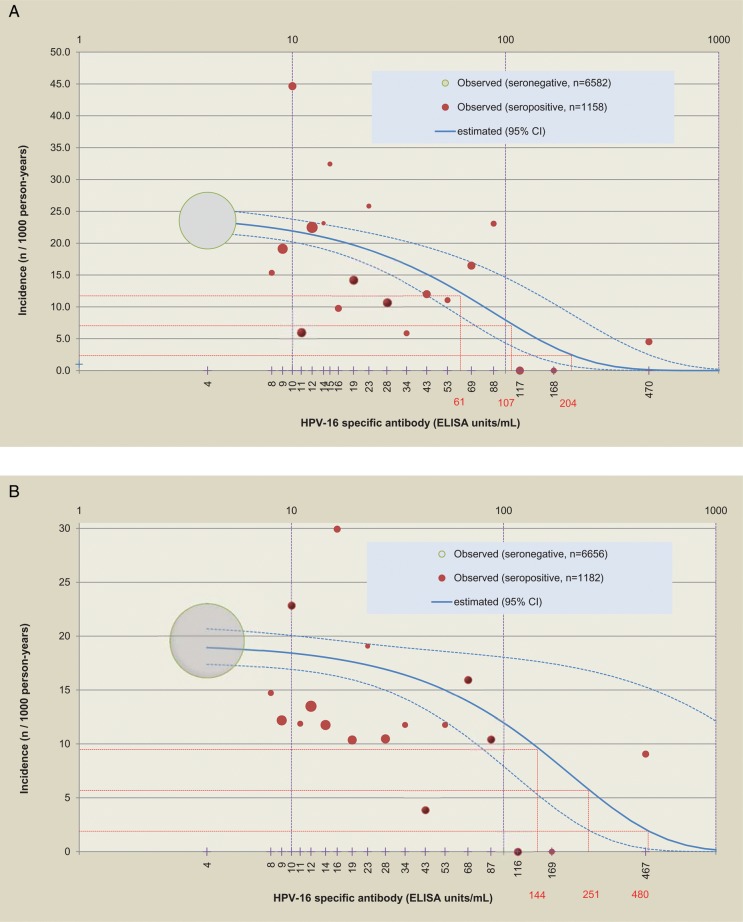Figure 4.
Relationship between initial antibody level and 6-month persistent infection or atypical squamous cells of undetermined significance or greater (ASCUS+) associated with human papillomavirus type 16. A, 6-month persistent infection. B, ASCUS+. The dot size is proportional to the number of subjects, the gray dot represents all seronegative subjects, and red dots represent approximately 5-percentile classes of seropositive subjects. The solid blue line corresponds to the Poisson regression model (the dotted lines are 95% confidence limits). The dotted red lines correspond to a 50%, 70%, and 90% reduction of the incidence of the endpoint (6-month persistent infection or ASCUS+), and the values in red are the corresponding threshold values of antibody titer. Sensitivity analyses including the covariates of age at first sexual intercourse and smoking history, or including only a subset of 100 seronegative subjects, produced similar results. For example, including the covariates of age at first sexual intercourse and smoking history for all seronegative subjects, the estimated antibody titers (with 95% confidence interval) yielding 90%, 70%, and 50% reductions in 6-month persistent infection were 180 (118–377), 94 (62–197), and 54 (36–114) EU/mL, respectively. Abbreviations: CI, confidence interval; ELISA, enzyme-linked immunosorbent assay; HPV-16, human papillomavirus type 16.

